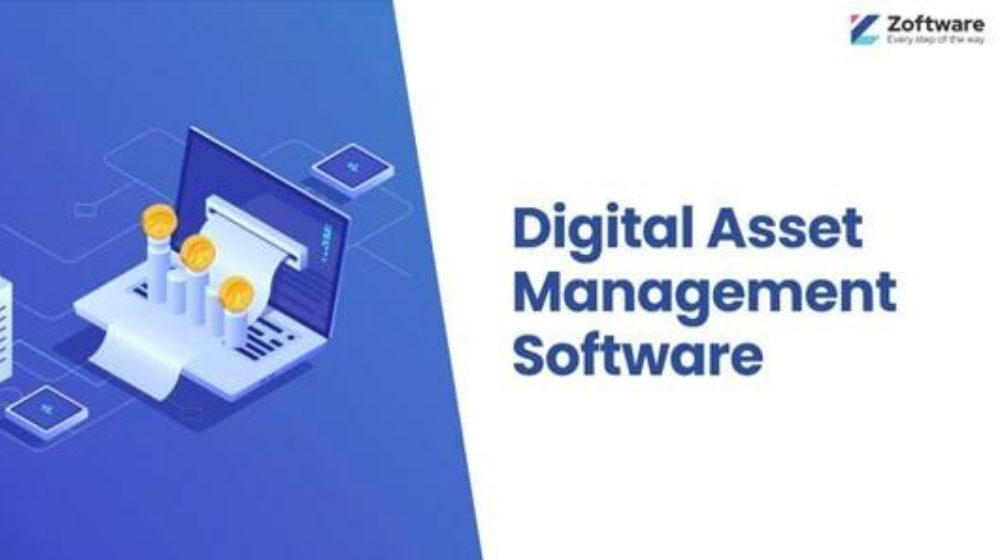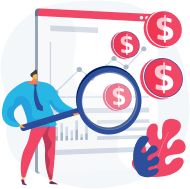How can finding Digital asset management software be made more accessible? Or why should one need Digital asset management?
Suppose you ask these questions repeatedly while setting up your content management software for online business. In that case, you should understand What digital asset management software is and how it can benefit your business.
But before that, you should understand why it is important to understand digital asset management and how to choose the right software. The Digital Asset Management (DAM) market is projected to grow from USD 5.27 billion in 2024 to USD 10.69 billion by 2029. This growth represents a Compound Annual Growth Rate (CAGR) of 15.22% over the five years from 2024 to 2029.
This shows how much digital engagement has grown by creating and sharing digital content online. This has broadened the scope of online marketing and business growth. So, having the right digital asset management software can significantly impact your business and improve user experience.
Digital Asset Management Software
Digital Asset Management (DAM) software is a technology solution designed to store, organize, manage, and distribute digital content such as images, videos, audio files, documents, etc. It acts as a centralized digital library, providing users with a secure and organized system to easily access and share their digital assets.
DAM systems often come equipped with metadata tagging, advanced search capabilities, version control, and rights management, making finding and managing content across an organization more accessible.
Importance of Digital Asset Management Software
Efficiency and Productivity: DAM software reduces the time and effort to locate and use assets by centralizing digital assets in one accessible location. DAM streamlines workflows, eliminates duplicate work, and boosts overall productivity.
Brand Consistency: DAM software helps maintain brand consistency across all channels and platforms by providing a single source of truth for brand assets. This ensures that all marketing and communication materials are up-to-date and aligned with the brand’s guidelines.
Improved Collaboration: With features that support sharing and collaboration, DAM software makes it easy for teams to work together on projects, even if they are distributed across different locations. This enhances communication and ensures everyone has access to the assets they need when they need them.
Security and Control: DAM systems offer robust security features that protect valuable digital assets from unauthorized access or theft. Advanced permission settings allow administrators to control who can view, edit, or distribute assets, ensuring that sensitive information remains secure.
Scalability: As organizations grow, so does the volume of their digital content. DAM software can scale to accommodate increasing assets, making it a sustainable solution for managing digital content over time.
5 Best Digital Asset Management Software
1.Bynder
Bynder makes managing digital assets a breeze with its user-friendly interface and wide range of features like intelligent search, auto-tagging, and customizable workflows. It’s all about making teamwork smoother, allowing everyone to easily create, find, and use what they need without a hitch. Thanks to being cloud-based, Bynder lets you access your assets from anywhere, offering flexibility and simplicity for businesses looking for an efficient DAM system.
2. Brightspot
Brightspot brings a robust DAM solution built to keep up with the ever-changing digital world. It’s crafted to speed up how you deliver engaging digital experiences, fitting perfectly for businesses eager to improve how they share content across different platforms. With features like role-specific access, real-time team collaboration, and a dashboard you can tailor to your needs, Brightspot makes managing and sharing digital content straightforward and effective.
3. MediaValet
MediaValet is a standout for its use of cloud technology to provide a DAM system that can grow with you. It shines with top-notch security and the ability to reach your team no matter where they are, making it ideal for organizations spread out across different locations. MediaValet offers tools to help you neatly organize, manage, and share your digital assets, including powerful search functions, watermarking for protection, and version control to keep things organized. It’s a go-to for companies valuing security and easy access in their DAM choice.
4. Filecamp
Filecamp offers a simple, wallet-friendly approach to digital asset management, opening up the world of DAM to companies of any size. Its cloud platform means your digital assets are securely stored and shared, focusing on keeping things straightforward and user-friendly. With perks like being able to customize the look, no limit on users, and control over access levels, Filecamp appeals to those seeking an effective, no-fuss DAM system.
5. Canto
Canto focuses on making digital asset management as simple as possible, providing a central spot for teams to store, share, and manage their digital content. With intelligent search, auto-tagging, and easy integration with other apps, it boosts teamwork and makes your content workflows run more smoothly. Canto is an excellent fit for businesses wanting to streamline their DAM processes and blend them effortlessly into their current operations.
How to select the right digital asset management software
Ease of use: one should search for digital management software that feels easier to use and is relatively complex to understand. Your teams should be able to use it well with a simple interface. An interface that doesn’t require any manual on how to use it every time you need to find a file. Software should be an extension of your content management system to make your daily tasks smoother.
Scalability: An appropriate digital asset management system should scale up as the business grows and accommodate your increasing library of digital assets without any hassle. Check whether the platform can handle an expanding content volume and more users over time. The software should ensure that your organization’s content management needs evolve, and the software should not hold you back.
Integration capabilities: Your DAM should play well with others in today’s digital ecosystem. Look for software that integrates seamlessly with your existing content management system and other tools and platforms your team uses. Whether it’s marketing automation tools, CRM systems, or social media platforms, smooth integration can significantly streamline your workflows.
Security and Permissions: Protecting your digital assets is non-negotiable. Choose a DAM with robust security features, including secure storage, backup options, and advanced permission settings. It should allow you to control who has access to what, ensuring sensitive information and assets are kept safe from unauthorized access.
Customer Support and Training: Even with the most user-friendly DAM, questions and issues will arise. Opt for a provider known for excellent customer support and training resources. Good support can significantly affect how quickly your team can adapt to the new system and resolve any hiccups.
Advanced Search and Metadata Management: The right DAM software should offer powerful search capabilities, making it quick and easy to find the assets you need. Look for features like metadata management, tagging, and categorization, which help organize assets in a way that’s logical for your team and simplifies content retrieval.
Even with a clear guide on choosing the right DAM, pinpointing the perfect one can be a challenge that requires considerable time and effort. It might be beneficial to get some expert input or advice. As another route, consider contacting a professional assistant like Zoftware, who specializes in identifying the ideal software solutions for businesses.
Zoftware: AI-Powered Software Discovery Program
Based in the Middle East, Zoftware stands out as a premier software discovery platform, providing a seamless solution for businesses searching for the right software. They simplify the hunt by helping companies specify their requirements, sift through various software options, and make knowledgeable choices guided by genuine user feedback.
Conclusion
In conclusion, digital asset management is at the core of a successful digital content strategy. It streamlines the management of digital assets and enables teams to create, manage, and enhance content more efficiently by offering collaboration, SEO, scalability, and security features.
For selecting the ideal digital asset management solution, you have Zoftware and its team of experts ready to assist.
So, why delay? Sign up and secure the perfect software for your business.
Frequently Asked Questions
1. What does digital asset management software do?
Digital asset management (DAM) software helps companies store, organize, manage, and distribute digital content like images, videos, documents, and more. It streamlines workflows by providing centralized access to digital assets, enhancing collaboration, ensuring brand consistency, and improving team efficiency.
2. What is an example of digital asset management?
An example of digital asset management is Adobe Experience Manager Assets, which offers robust tools for managing, optimizing, and delivering digital assets. It enables teams to create, manage, and deliver engaging digital experiences efficiently, ensuring content is consistent and accessible across different channels and platforms.
3. What is the meaning of DAM in software?
In software, DAM stands for Digital Asset Management. It refers to systems designed to store, organize, and share digital files such as photographs, videos, audio files, and documents. DAM solutions facilitate easy access to and management of digital content, streamlining business operations, and enhancing content strategies.
4. What is asset management software used for?
Asset management software is used for tracking and managing assets (both physical and digital) throughout their lifecycle. It aids in inventory management, maintenance scheduling, asset valuation, and depreciation calculation. This software is crucial for optimizing asset use, reducing costs, and improving decision-making in asset-intensive industries.

